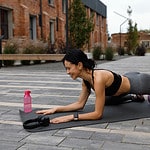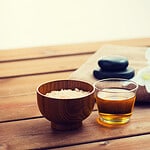Overview of Knee Infection
Knee infections can be painful and cause swelling, with a limited range of motion. Rest and recovery are vital for healing.
In this article, we’ll view causes and symptoms of knee infections. We’ll also look into how rest and recovery can speed up the healing process.
Causes of knee infection
Knee infections can have many causes. Usually, the culprit is a bacterial infection, but viruses, fungi and parasites can also be to blame. Injury or trauma to the knee joint can cause an infection. Also, if you have a weakened immune system due to a chronic disease, like diabetes or HIV/AIDS, this can increase your risk.
Sometimes, medical procedures, such as surgery or an injection, may introduce bacteria into the knee joint and lead to an infection. Other risk factors include:
- age (older adults are more likely to get bacterial infections)
- obesity
- poor nutrition (which can be a breeding ground for bacteria)
- sharing items like razors or towels that may spread germs.
If you’re suffering from pain, swelling or redness around your knee joint, it’s important to get medical attention right away. After a diagnosis, your doctor may prescribe antibiotics, or other medications depending on the type of infection.
Symptoms of knee infection
Knee infection symptoms vary, depending on the type and severity. Some people may not experience any. Generally, they include:
- Pain: It could be mild or severe. It usually gets worse when you move or put pressure on the knee.
- Swelling: This can make it hard to move or extend the joint. You might also feel tightness, warmth, or redness from increased blood flow.
- Redness: The area around the infected joint might look red, due to inflammation and irritation.
- Fever: If your body is fighting off an infection, you may have a fever. This is a serious sign, needing medical attention.
- Limping: You may limp when standing or moving, due to discomfort. This could mean you need medical treatment right away if you have other symptoms, like pain, redness, fever, or swelling.
Rest and Recovery
Rest and recovery are super crucial for healing from a knee infection. Give your body a break and let it heal without extra strain. Patience is key!
Focus on healthy habits;
- gentle stretching
- rest
- lots of fluids
- good nutrition
- managing stress
Now, let’s find out how to speed up the healing process with rest and recovery!
Ice and elevation
Cold therapy, also known as ice therapy or cryotherapy, is one way to reduce pain and slow or stop bleeding. It reduces swelling and inhibits nerve signals sent from the knee to the brain. To apply, use a cold pack or frozen vegetables for 15 minutes.
Elevation also helps to reduce swelling in the knee after an injury. Keep the affected limb 12 inches to waist-level during rest or sleep. Use pillows to keep it in place. If numbness or tingling occur, reduce the elevation.
Compression and anti-inflammatory medication
Compression and anti-inflammatory medications are two common treatments to reduce pain and swelling associated with a knee infection. Bandages are used to physically support the joint and a brace is worn during recovery. This helps keep the joint still, allowing it to heal more quickly.
Anti-inflammatory medication may be used to reduce inflammation and manage pain. It also helps keep fluids in the joint. Physical therapy is sometimes prescribed too. It can strengthen and ‘re-educate’ muscles around the knee for better recovery.
Physical therapy
Physical therapy can be key to healing after a knee infection. Depending on the virus, physical therapy might involve exercises and stretches to strengthen muscles, ligaments, and bones at the site of the infection. Your therapist could craft an exercise plan to boost strength and flexibility in the knee joint. Massage therapy can be helpful in shrinking swelling and easing discomfort around the infected area. Aquatic therapy is a good way to build muscle strength while minimizing stress on the joints. If needed, your therapist may supply mobility aids such as crutches or braces to ward off extra damage or problems during recuperation.
It’s important to go over all possibilities with your medical care provider before settling on which form of physical therapy is best for you:
- Exercise plan
- Massage therapy
- Aquatic therapy
- Mobility aids
Diet and Nutrition
Nutrition and diet are vital for any recovery process. Eating a healthy and balanced diet can give the body energy and nourishment it needs to heal. Foods high in protein, fiber, vitamins, and minerals can help the body heal faster. Plus, certain foods have healing traits that can speed up the healing process from a knee infection.
Here are some useful dietary tips that can help with knee infection recovery:
Foods to avoid
Eating a balanced diet is important for your health. But, certain foods should be avoided. These can be harmful instead of helpful if consumed too much. Here are some food items to limit:
- High-fat meats like chicken skin, sausages, bacon & pork. These increase cholesterol & risk of heart disease.
- Refined carbs like white bread, cereals, white pasta & white rice. These have lost their nutrients during processing.
- Sugary drinks like soft drinks, fruit drinks & energy drinks. These increase obesity & diabetes.
- Processed foods like chips, cakes & pastries. These contain high salt, sugar & fat.
- Trans fats. Too much increases risk of stroke, heart disease, Alzheimer’s & other conditions. Look out for ‘partially hydrogenated’ or ‘hydrogenated’ vegetable oils.
Foods to eat
A healthy diet is super important for recovery from an infection. Eating nutrient-rich foods helps mend damaged tissue and provides essential vitamins, minerals, and compounds for healthy function. Here are 4 types of food that are especially helpful for recovering from a knee infection:
- High Protein Foods: Chicken, fish, tofu, eggs, legumes, and nuts contain amino acids which form collagen fibers. This helps when wounds heal by forming new tissue. Eat 3-4 servings of protein daily for best healing.
- Vitamin C Rich Foods: Vitamin C helps with cell production and absorbs iron from food, which aids in wound healing. Citrus fruits, bell peppers, tomatoes, kiwi, and berries are all good sources. Eat 1-2 servings per day during recovery.
- Omega-3 Fatty Acids: Omega-3s in oily fish like salmon and sardines have anti-inflammatory properties, speeding up the healing process. Omega-3s also improve joint mobility, which is great for recovery from lower limb injury. Aim for 3 servings per week to maximize benefits.
- Unprocessed Carbohydrates: For energy during recovery, eat complex carbs rather than processed sugars. Whole grains like brown rice and whole grain couscous provide long lasting energy – switch white rice and pasta for them.
Lifestyle Changes
Recovering from a knee infection can be tough. But, making lifestyle changes can help! Your doctor may suggest eating better, reducing stress, more rest, or more excercise – depending on the severity.
Below, we discuss the lifestyle changes that can assist with knee infection recovery:
- Eating better
- Reducing stress
- Getting more rest
- Incorporating more exercise
Avoid activities that aggravate the knee
To minimize knee irritation, it’s best to avoid activities that put strain on it. Running, long standing/sitting and lifting heavy objects can all make pain worse. Being overweight or obese can also cause extra pressure on the joint, making it hard to move.
Practice good posture when standing/sitting: feet shoulder-width apart, knees slightly bent, back straight, feet firmly soled. Stretch regularly to increase flexibility and ease movement. And avoid activities that make the pain worse, so as not to overwork the joint.
Strengthen the knee
Strengthening the knee is vital for healing a knee infection. This boosts mobility and eases pain. Physio exercises and squats, calf raises, hamstring curls, leg presses, and lunges are great for strengthening the muscles around the joint and avoiding further injury.
- Gradually up the intensity.
- Exercise with supervision.
- Warm up and cool down before and after each session.
- Take rest days between sessions to prevent straining your knees.
Improve flexibility
To quicken the healing from a knee infection, improving flexibility is key. Stretching and working on range of motion in the leg can make the knee joint stronger and more stable. It’s essential to stretch both before and after physical activity.
Exercises that help improve flexibility include:
- Forward Lunge: Step one foot forward and bend your front knee until your thigh is parallel to the ground. Keep good posture. Push through your heels to come back up.
- Reclined Hamstring Stretch: Lie on your back. One leg should be straight out while keeping the other leg bent. Put both hands on the back of the straight leg and lift it up. Feel a slight resistance in the hamstring region before releasing slowly back.
- Standing Calf Stretch: Put one foot two feet behind you and the other foot slightly in front of you. Bend both knees to a 90-degree angle. Press through your rear heel, pushing at a mild resistance for 10 seconds, then quickly release for one second. Repeat with the other foot. Do this 15 times.
Remember to rest when needed. Applying too much pressure or pushing too hard can do more harm than good. Start with easy stretches. Progress gradually.
Follow-up Care
A knee infection requires follow-up care from a doctor. This includes: tracking the infection, inspecting X-Rays and other scans, physical therapy to rebuild strength and movement, and rest and recovery.
Let’s discuss rest and recovery in detail and how it assists the healing after a knee infection.
Follow-up visits to the doctor
Following your doc’s orders after a knee infection is essential. Depending on the infection’s severity, further tests or imaging may be suggested, like an X-ray, ultrasound, or MRI. Your doc will provide instructions for caring for your knee during its healing.
Visits are booked 1-2 weeks post-treatment. The doc’ll examine the knee and ask about symptoms and healing. Tell ’em if ya feel pain and if you’ve seen improvement since treatment started. Blood tests‘ll be done to detect infection or inflammation.
Physical therapy or crutches might be prescribed, depending on the swelling and weight-bearing capacity. Exercises help restore strength and flexibility, whilst avoiding scar tissue formation. Respect instructions from the physical therapist; complications from surgery or injury from overuse during rehabilitation can be avoided.
Monitoring for signs of infection
It is a must to check for infections or complications post-surgery. Redness, pain, feeling warm, and swelling around the cut are common signs of an infection. If you spot any of these, consult your doctor quickly. Antibiotics and more tests may be prescribed.
Fever, chills, feeling unwell, loss of appetite, and tiredness can indicate something else. Report these to your doctor right away.
It is also important to follow medical advice for exercises and rest times when rehabbing. Don’t do activities that put extra strain on your knee until full recovery. If the pain heightens after activity, talk to your doctor about modifying medications and exercise plan.
Long-term care plan
Once the infection is gone and you feel better, your doctor will monitor your progress. This usually means following a special plan for long-term care. Depending on how bad the infection was, this could take months or years.
Your long-term care plan has a few steps:
- Physical Therapy: This builds and strengthens your knee. It also teaches you ways to keep your knee flexible.
- Regular checkups: Tests like ultrasounds and x-rays make sure the infection is not coming back.
- Antibiotics if needed: Your doctor may prescribe antibiotics if the infection comes back. It can be taken in tablets or injections over a period of time up to 6 months.
- Healthy lifestyle: Eating right and exercising can help stop infections from coming back, especially if you have an underlying health issue like diabetes or kidney disease.
Doing this plan will help any future problems get caught and treated quickly. This will give you peace of mind after an infection in your knee area.
Frequently Asked Questions
Q: What can I do to speed up the healing process after a knee infection?
A: Rest and recovery are the most important steps in speeding up the healing process. You should get plenty of rest and avoid strenuous activities. You should also take any prescribed medications as directed and apply cold compresses to the infected knee. Additionally, you may want to consider physical therapy to help strengthen the knee and aid in the healing process.
Q: How can I reduce pain and swelling after a knee infection?
A: Applying cold compresses to the infected knee can help reduce pain and swelling. You may also want to take anti-inflammatory medications such as ibuprofen or naproxen, as directed by your doctor. Additionally, elevating the knee when possible can help reduce swelling.
Q: What are the signs that the knee infection is not healing properly?
A: You should contact your doctor immediately if there is worsening pain, swelling, redness, or drainage from the infected area. You should also contact your doctor if the infection is not improving after a few days. These signs may indicate a more serious condition that requires medical attention.





